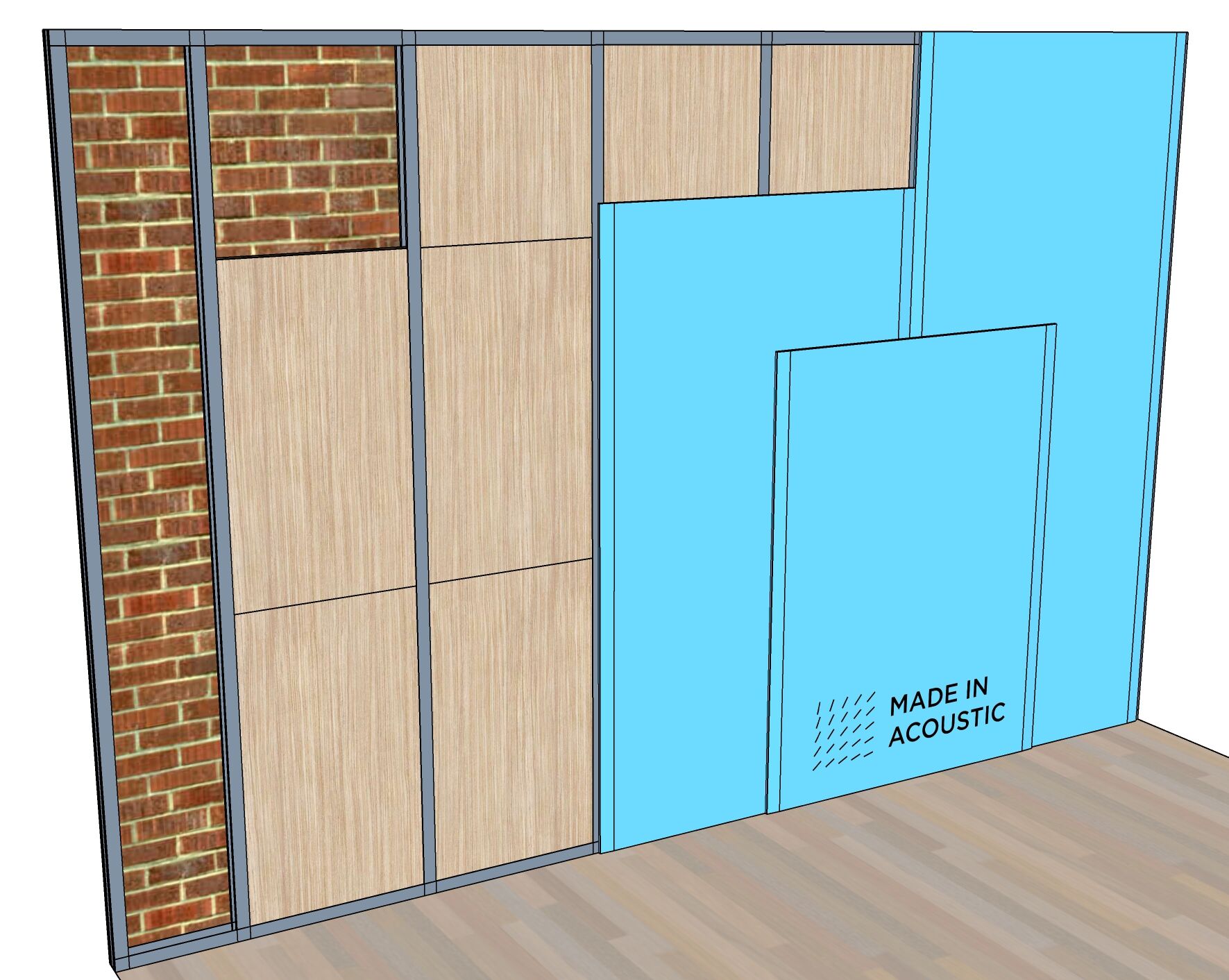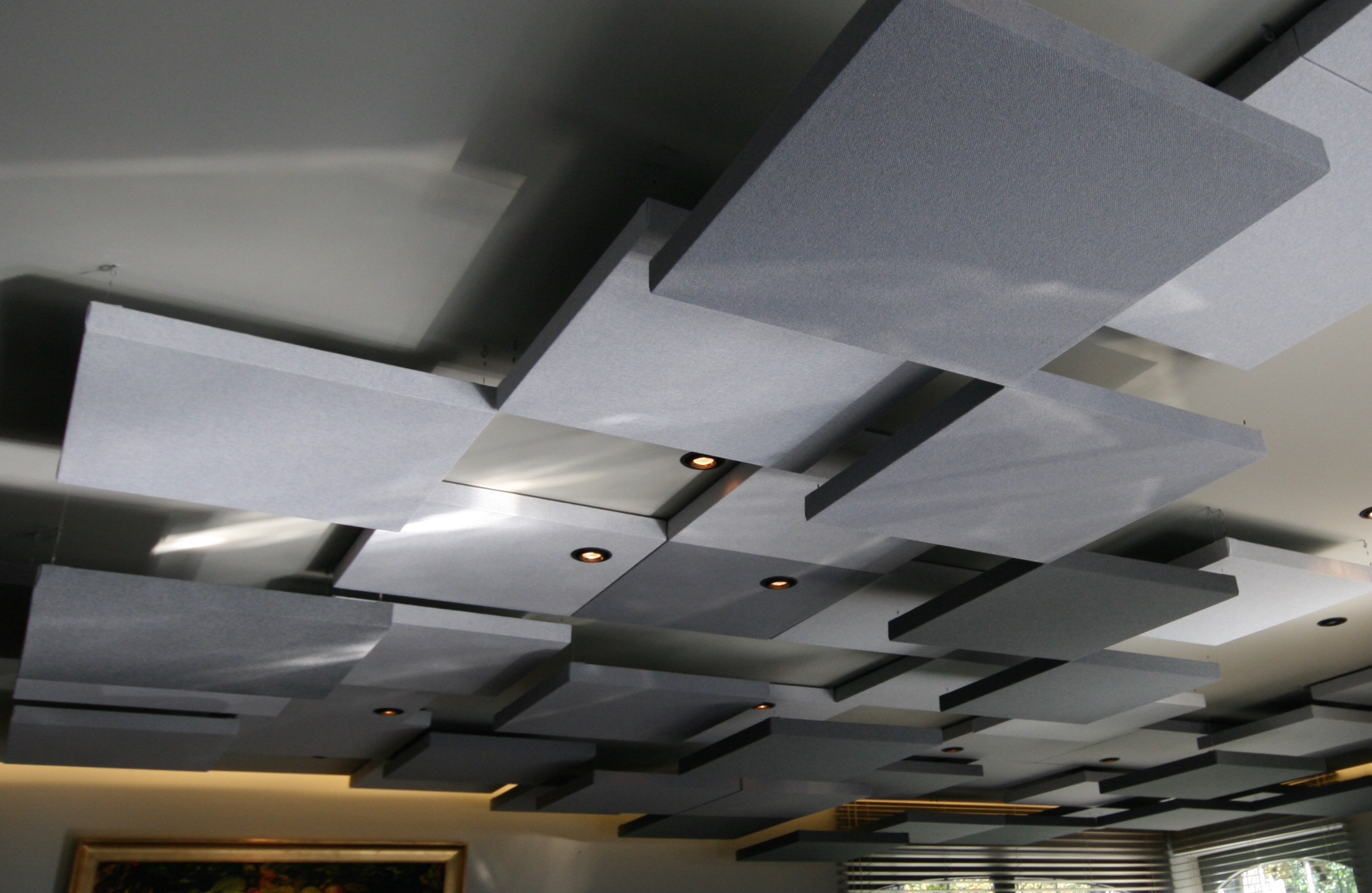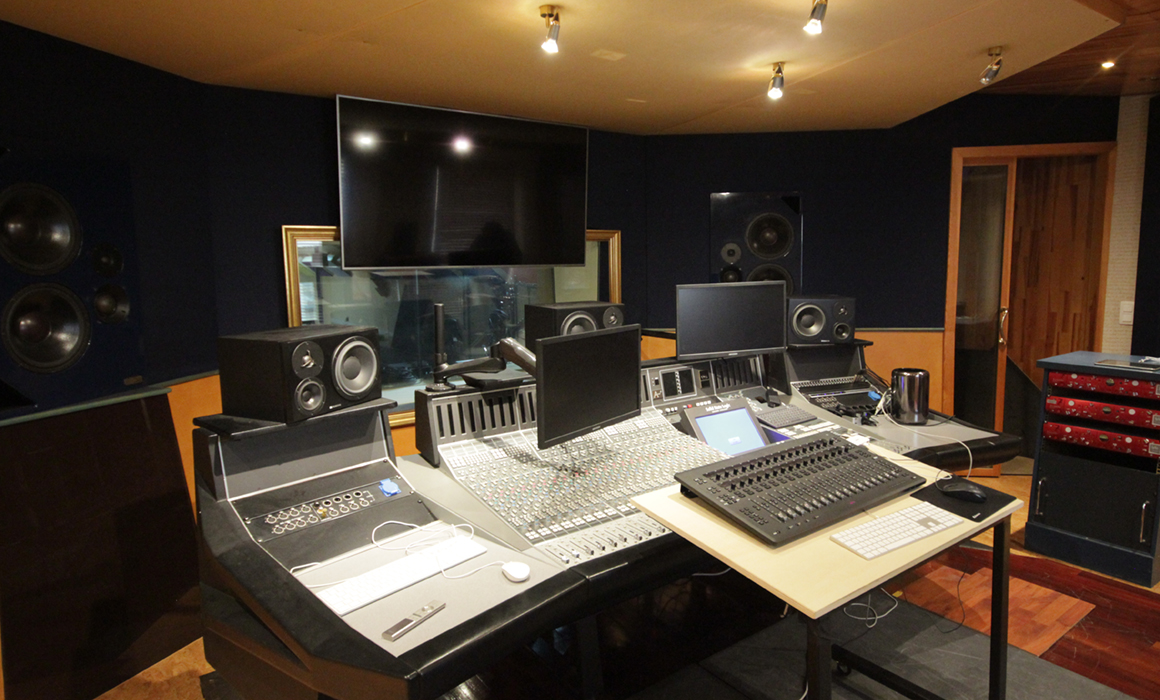What is the difference between soundproofing and acoustic treatment?
Two types of noise can be transmitted: airborne noise and structure-borne noise.
The necessary means to obtain adequate soundproofing according to the context are varied and sometimes defined by a prior acoustic study.
For each type of noise (airborne, structure-borne), the solutions to be implemented are dimensioned based on:
- the existing situation (acoustic performance of the building or wall)
- the performance to be achieved (according to the intended use of the space)
- the presence of technical elements and openings
- the involvement in the choice of natural and durable materials.


Obtaining good acoustics depends on the shape and volume of the room, and the acoustic nature of its walls.
In many cases, the addition of absorbent materials is enough to reduce a reverberation time that is too long, causing acoustic discomfort, auditory fatigue, or poor understanding.
The more complex cases of control rooms or recording studios, the shape of the rooms has a great influence on the sound distribution. Therefore, high-quality engineering is essential. Moreover, the sound distribution will be specifically controlled in the rooms through selective absorbing or diffusing devices such as:
- tuned bass traps
- Helmholtz resonators: slat panels and perforated panels
- membrane or suspended plate resonators
- Schroeder diffusers
- 2D and 3D quadratic residue diffusers
